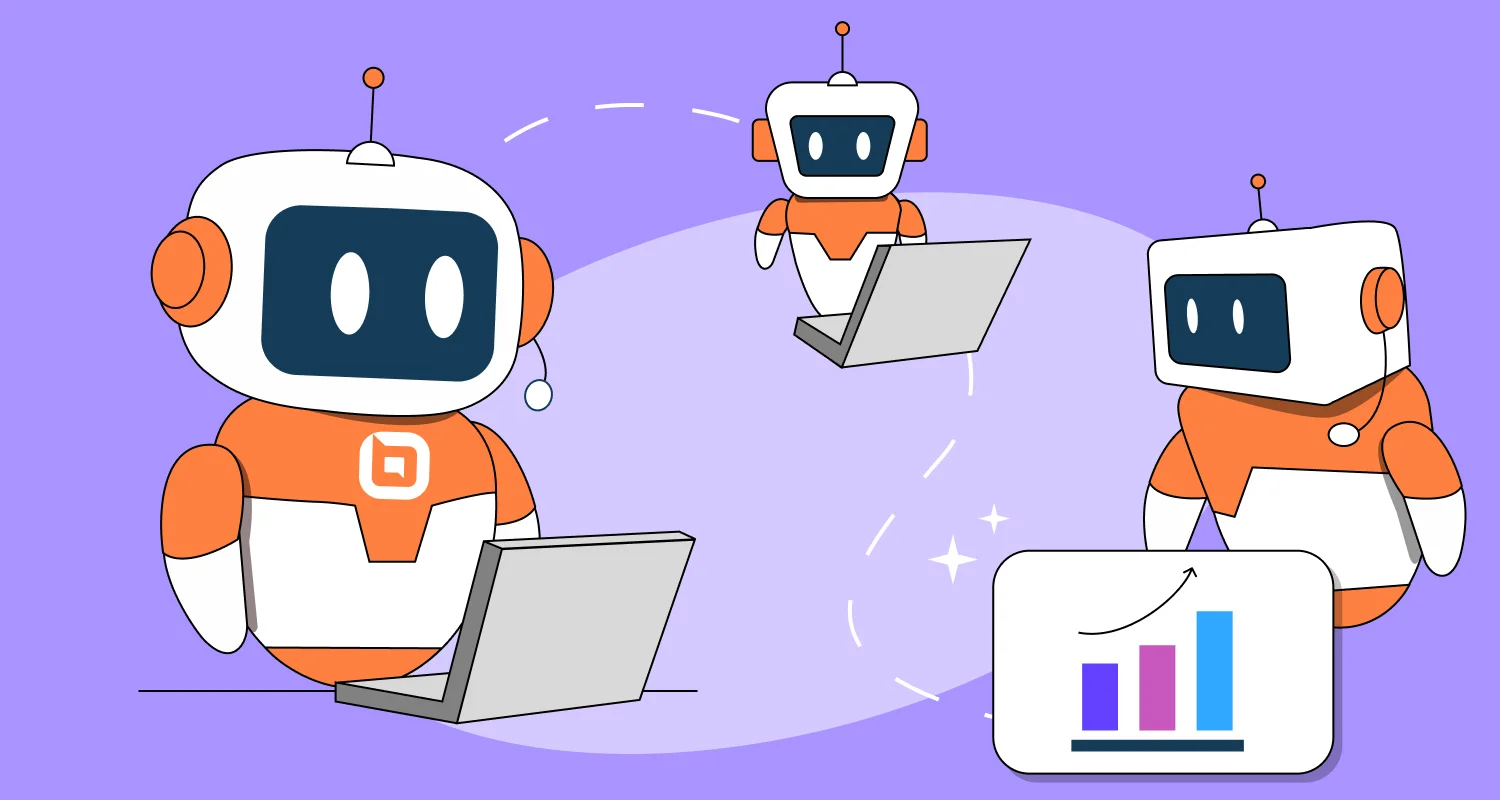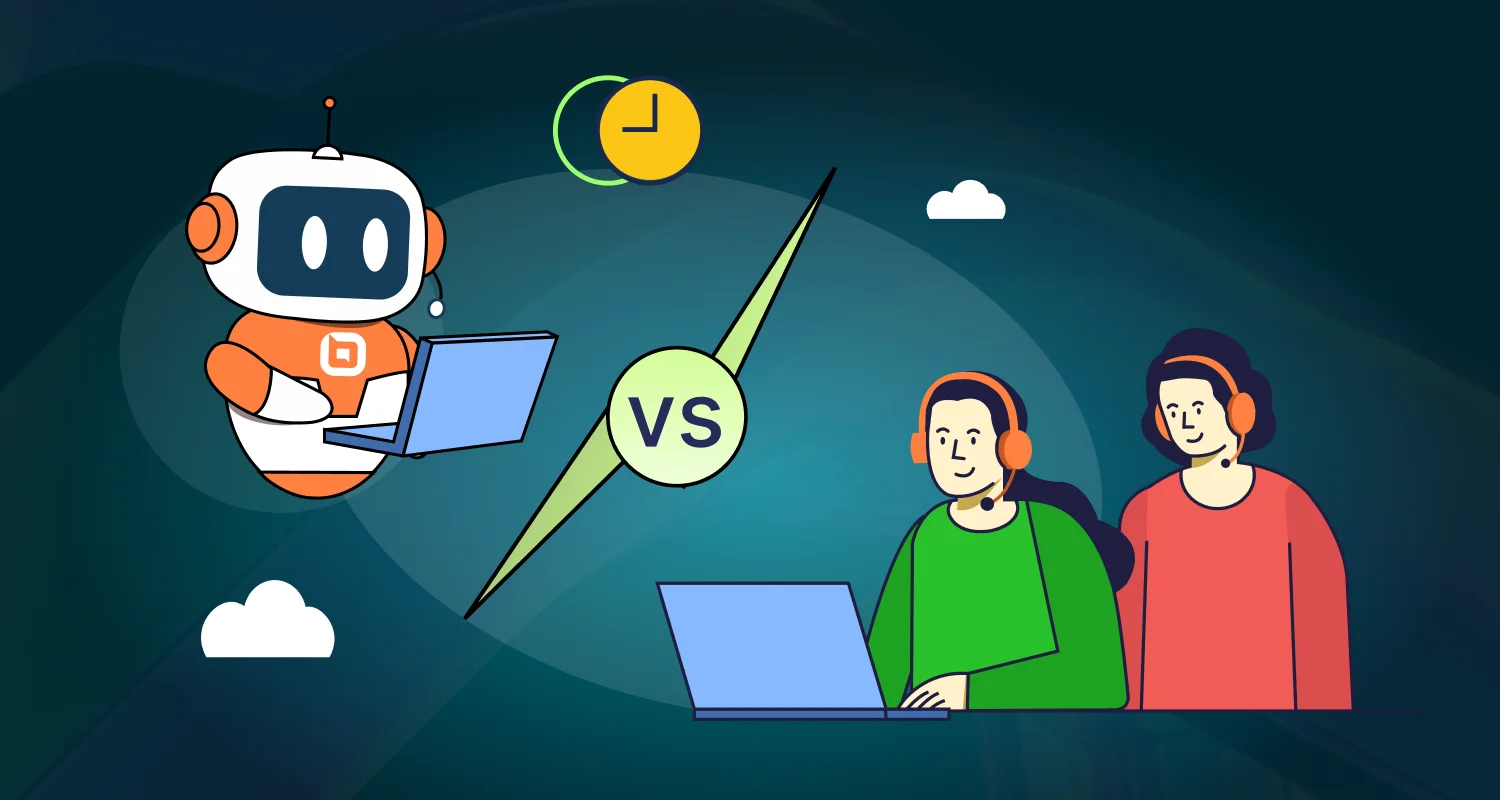Web self-service is a customer support approach where users find answers independently on a website using tools like knowledge bases, FAQs, customer portals, and AI chatbots without waiting for an agent.
This customer-centric approach boosts efficiency, reduces costs, and enhances satisfaction, making it essential for e-commerce, banking, healthcare, IT, and any business handling high-volume interactions.
In this article, we’ll explain what web self-service is, explore its main types, and share best practices for successful implementation.
Let’s dive in.
What is web self-service?
Web self-service is a customer support strategy that enables users to resolve issues independently trough digital tools without human agent intervention.
The platform doesn’t just help customers, it benefits your support team too. By giving customers easy access to resources, you reduce incoming tickets and free agents to focus on complex issues where their expertise matters most.
The result? Less friction, faster resolutions, and greater efficiency for everyone.
Why web self -service is important?
According to Havard Business Review 81% of customers now attempt to solve issues on their own before contacting support.
Offering powerful self-service isn’t just a nice-to-have feature anymore it’s a strategic necessity that meets modern customers exactly where they are.
Below are the key benefits of implementing self-service solutions in your support strategy.
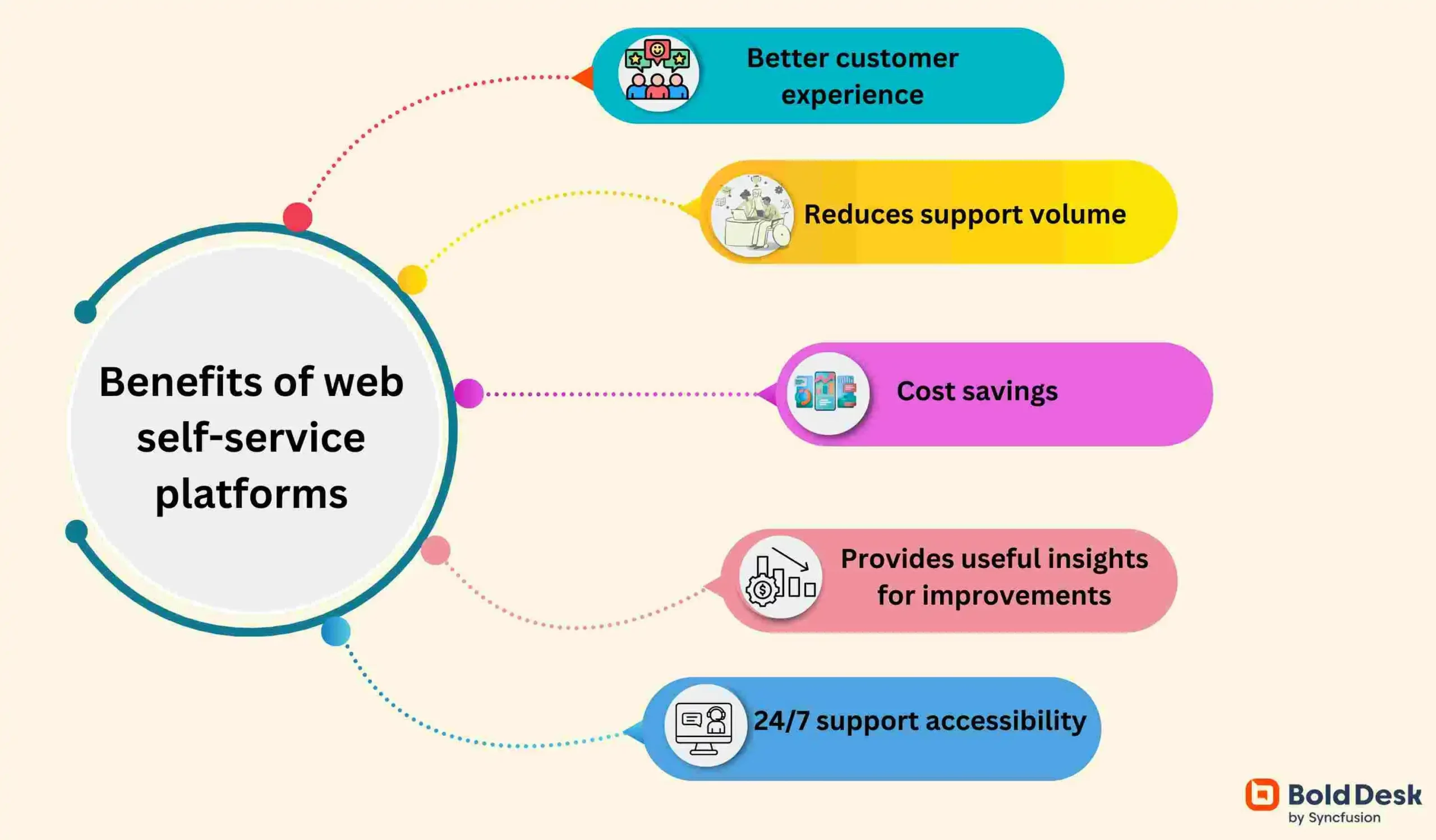
- Empowers users to solve problems independently: Web self-service gives customers instant access to information, avoiding long waits or interactive voice response systems.
- Streamlines issue resolution and reducing unresolved tickets: Customers can solve issues independently, reducing the number of support requests.
- Reduction in customer support costs: Fewer tickets and calls lower staffing needs and operational costs.
- Provides useful insights for improvements: Usage data reveals popular resources and gaps, helping improve content and products.
- Round-the-clock access to services and support: Customers can access help anytime, anywhere, without time zone or business hour limitations.
Main types of web self-service tools
Web self-service isn’t one-size-fits-all. Different types serve different customer needs. Here’s a detailed look at the most common types:
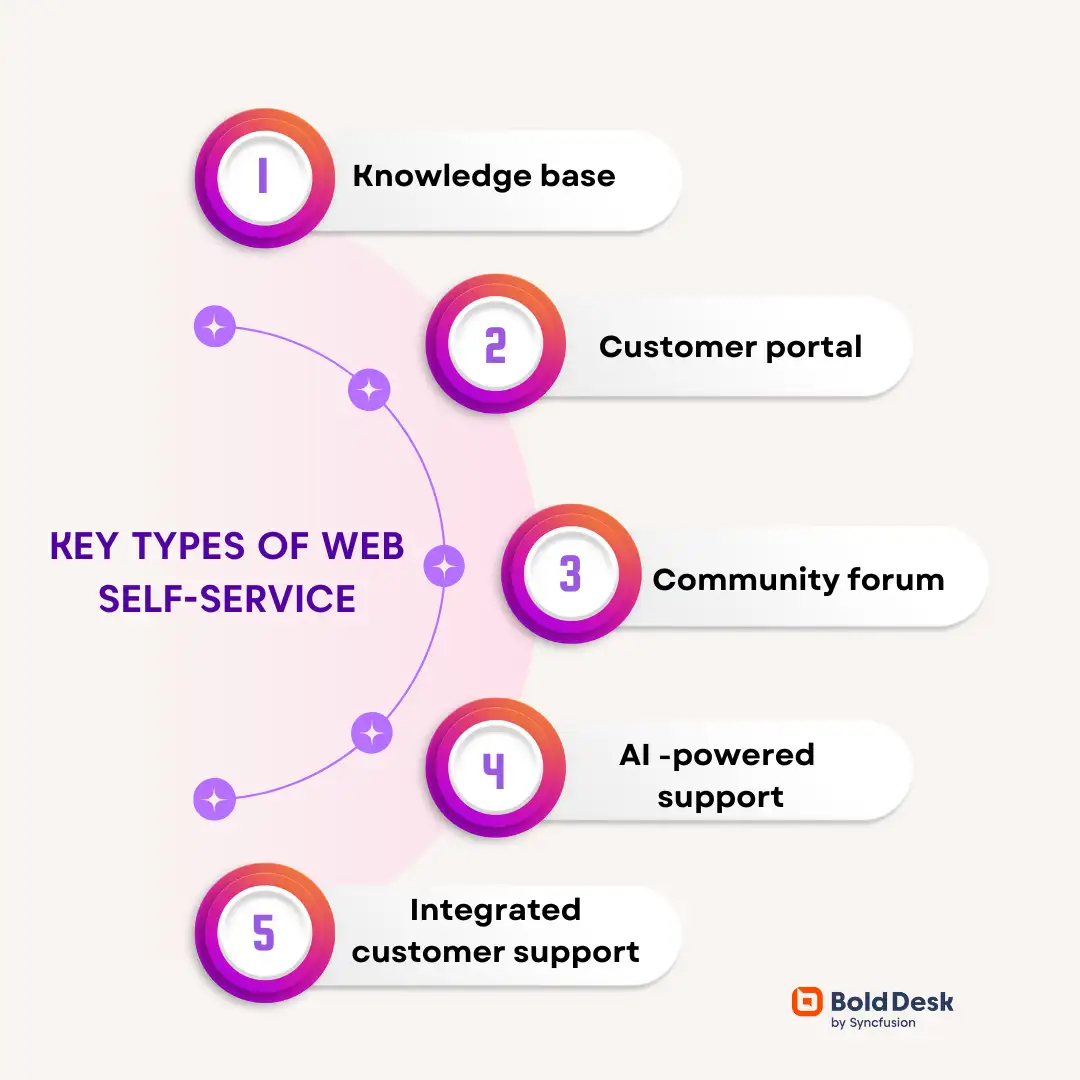
Knowledge base
Knowledge base software is a centralized online resource hub that provides organized, searchable information for customers, prospects, and support agents.
It typically includes resources like FAQs, step-by-step instructions, product manuals, tutorials, troubleshooting guides, how-to videos, and diagrams.
For many businesses, the knowledge base is the primary point of contact for support, often accessed through a help center or embedded in product interfaces via widgets.
There are various platforms available to support this process. For example, BoldDesk offers the best knowledge base software that helps teams create, manage, and share self-service resources with users.
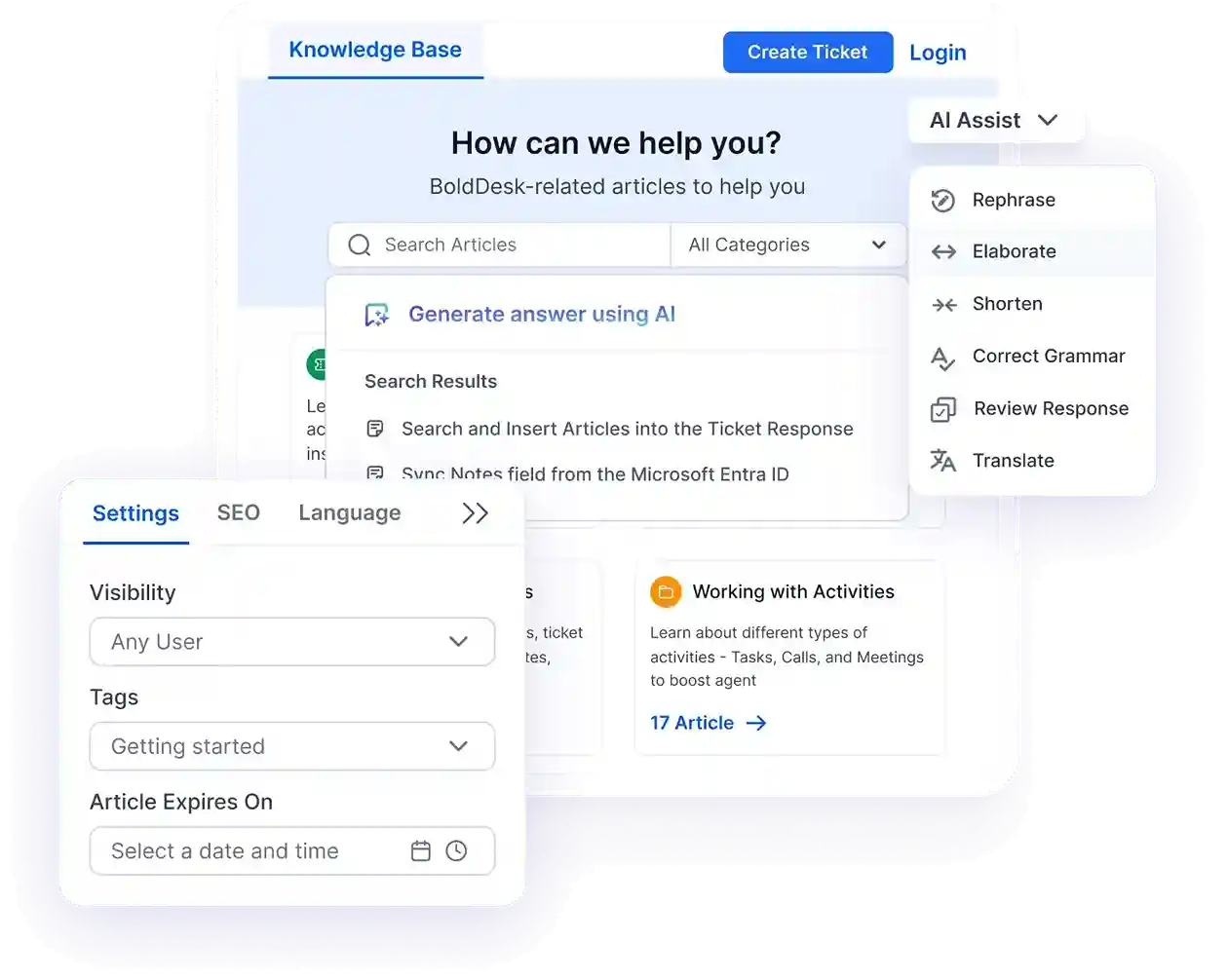
Customer portal
Customer portal software is a secure, login-based platform where customers can access personalized content and self-service tools to manage their support needs autonomously.
Unlike a publicly accessible knowledge base, a customer portal is private and personalized. Client portal offers secure access to account-specific support and exclusive resources tailored to each user’s needs.
Through the portal, customers can:
- View and manage their support tickets.
- Access exclusive resources and documents.
- Submit feedback and track request statuses.
Community forums
A community forum is an interactive space on your website where customers can connect, ask questions, share insights, and support one another. It’s typically placed in a publicly accessible section of your site to encourage engagement.
In fact, according to Higher Logic, 62% of customers are more likely to buy from brands with active, visible communities.
Discussions often go beyond your product, covering broader topics of shared interest. This gives you real-time insights into what matters most to your users—what’s confusing, what they love, and how they use your product.
AI-powered support
AI-powered self-service tools use artificial intelligence, natural language processing (NLP), and machine learning to understand user intent, deliver automated responses, and continuously improve over time.
BoldDesk combines AI Copilot, smart search, and autonomous AI agents to guide users to answers, handle routine tasks, and reduce escalations — while traditional chatbots manage common queries using predefined rules.
By leveraging these AI-driven tools, businesses can learn from interactions, detect customer emotions, and continuously improve accuracy and efficiency, resulting in faster, more personalized support.
Integrated customer support
An integrated customer support portal combines multiple channels, tools, and customer data into one unified system. It works within your existing support environment to create a seamless experience for both customers and agents.
For example, if a customer can’t find an answer through self-service, they can start a live chat or submit a ticket without leaving the page.
Common tools in an integrated platform include:
- Troubleshooting guides
- Knowledge base
- Frequently asked questions (FAQs)
Bringing these tools together makes support faster, easier, and more effective.
Best practices for implementing web self-service
Your web self-service approach will naturally vary depending on your industry, company size, customer base, and available resources.
However, the fundamental steps for building an effective self-service experience remain consistent across all types of businesses and platforms.
These include:
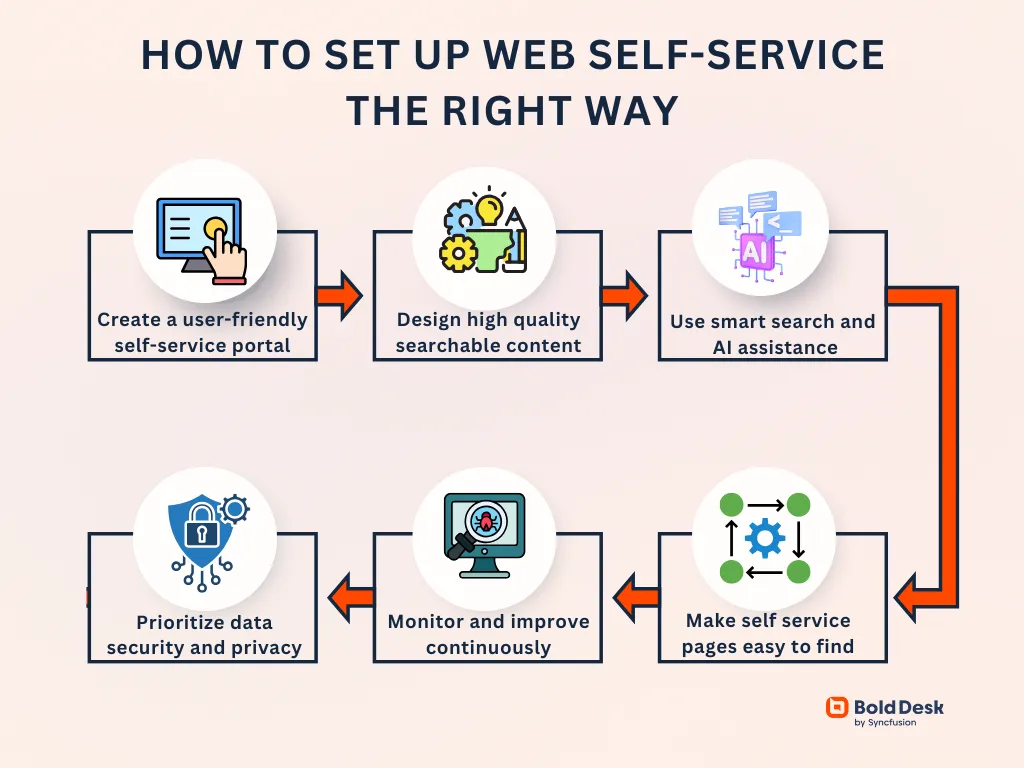
Build a self-service website that works for your customers
Your first move in creating a web-based self-service experience is choosing the right platform. BoldDesk’s web self-service suite — featuring a knowledge base, portal, and AI search makes support simple and accessible.
How to implement:
- Choose your platform wisely – Consider your existing tools, budget, and scalability needs.
- Pick the right formats – FAQs, knowledge bases, community forums, and customer portals each serve different needs. Use customer data to guide your choices.
- Track and adapt – Monitor common questions and user behavior to refine your self-service offerings over time.
By selecting the right tools and tailoring your self-service formats to what your customers need, you build a support system that’s not only efficient but also scalable and user-friendly.
Create high-quality content
If your self-service content isn’t clear, helpful, or easy to find, customers won’t stay they’ll go straight to contacting support agents.
The heart of a successful web self-service strategy is high-quality, user-friendly content that speaks to the needs of different types of customers.
When your resources are well-written, searchable, and visually engaging, users are more likely to find answers on their own.
How to implement:
- Write for clarity and discoverability – Create easy-to-follow guides using relevant keywords to improve search visibility. Structure content with headings, bullet points, and visuals to make it scannable and engaging.
- Keep content inclusive and up to date – Regularly expand your knowledge base to reflect evolving customer needs. If you serve a global audience, offer multilingual support to ensure accessibility for all users.
Investing in quality content means fewer support tickets and happier customers who feel confident solving issues on their own.
Use smart search and AI assistance
Customers often don’t know the exact terms to search, which can make finding the right help frustrating.
Smart search, powered by AI, enhances accuracy and speed by understanding natural language and user intent, guiding users to the most relevant content faster.
For example, BoldDesk’s knowledge-based AI search feature uses intelligent algorithms to interpret queries and suggest relevant articles improving the overall self-service experience.

How to implement an effective AI search tool:
- Introduce quick smart search – Implement AI-powered search with natural language understanding.
- Leverage AI assist solution – Offers autocomplete, filters, and related article suggestions.
By making the content easier to find relevant information, smart search reduces friction and increases self-service success rates.
Simplify support with accessible self-service pages
Don’t let hidden help pages cost you customer trust. Make your self-service resources easy to find and navigate.
With clear access to FAQs, knowledge bases, and contact options, customers resolve issues quickly boosting satisfaction and reducing support load.
How to implement:
- Enhance visibility and clarity – Add links to self-service resources in the main menu, navigation bars, and footer. Use clear labels like “Help Center” or “Support” to guide users.
- Optimize usability across devices – Ensure the layout is intuitive and mobile-friendly. Include “Contact Support” or “Still need help?” options on every page to offer additional assistance.
Monitor and improve continuously
Launching your web self-service platform is just the beginning, its long-term success depends on continuous monitoring and refinement.
As customer needs, behaviors, and your products evolve, it’s essential to regularly review analytics, gather feedback, and analyze usage patterns to keep your platform relevant and effective.
How to implement:
- Monitor relevant metrics – Track key performance indicators like search success rate, bounce rate, customer effort score, average time on page, content gap analysis and ticket deflection.
- Analyze and improve – Regularly perform customer service audits and update content based on analytics and product changes.
Prioritize data security and privacy
Users must trust that their personal information is protected. Security breaches can lead to serious legal, financial, and reputational consequences.
How to implement:
- Use secure authentication methods and HTTPS encryption.
- Protect sensitive data and comply with regulations like GDPR or HIPAA.
By prioritizing data security and privacy, you build customer trust, ensure compliance, and safeguard your business from potential risks.
Key examples for web self-service tools
Web self-service empowers customers to access information, resolve issues, and complete tasks alone through digital tools improving convenience and reducing support demand.
Below are some common examples of how businesses apply web self-service across industries.
BoldDesk: Integrated customer support
BoldDesk is an AI-powered customer support platform that offers a complete suite of web self-service tools for both internal and external users, providing direct access to all support resources.
From this centralized hub, users can browse the knowledge base, submit and track tickets, engage in real-time live chat, and receive AI-driven article suggestions tailored to their queries.
If existing resources don’t provide the answer, users receive clear guidance on how to submit a ticket or contact a support representative directly.
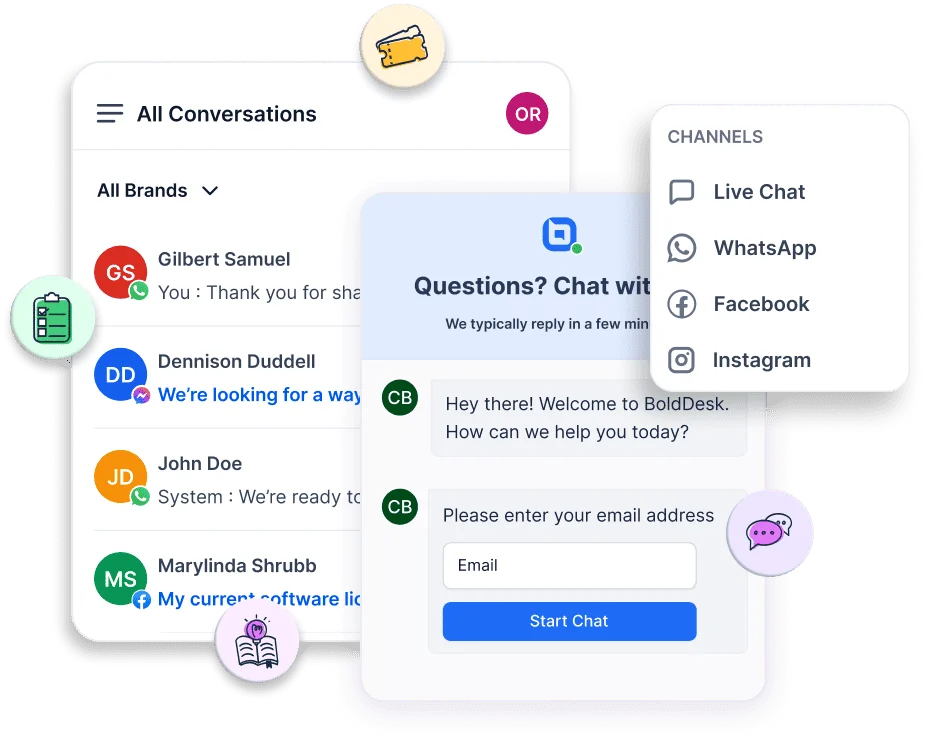
Coursera: Learner help center
Coursera’s Help Center provides learners with access to a wide range of self-service tools, including FAQs, course guides, and account management resources.
Users can troubleshoot payment or access issues and receive personalized article suggestions based on their questions.
If further help is needed, they can escalate to support team through the contact options provided.
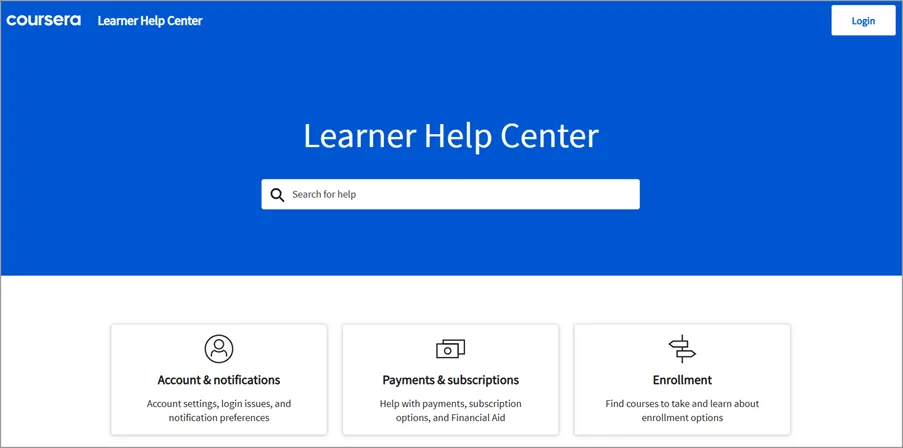
Microsoft: Support site
Microsoft’s support site features a comprehensive self-service experience with product-specific help articles, guided troubleshooting tools, community forums, and downloadable updates.
Users can resolve most issues freely through intuitive navigation and search. For more complex problems, the site offers escalation paths to live support.
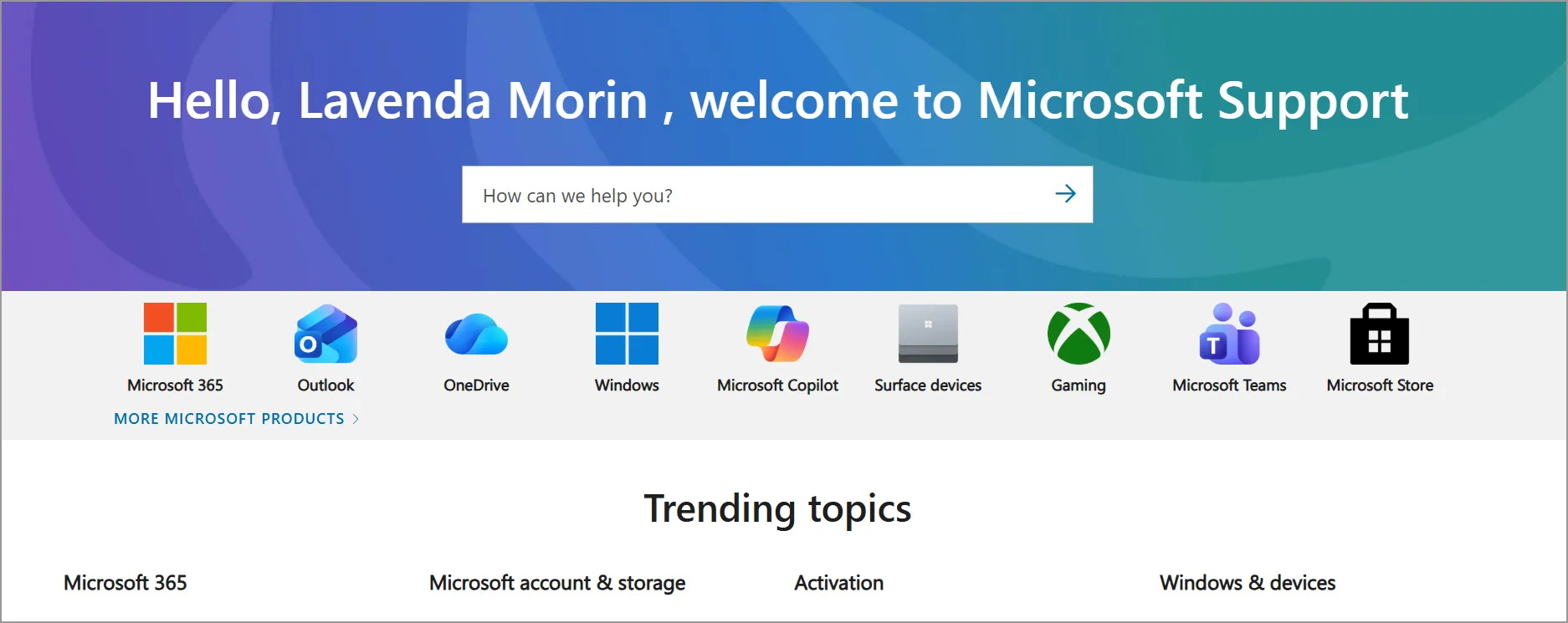
Transform customer support with powerful web self-service tools
Web self-service creates a win-win for support delivering convenience for customers and efficiency for businesses. With AI-powered tools, users can quickly find answers and resolve issues without waiting for assistance.
BoldDesk takes this further with a scalable solution that combines knowledge bases, AI-powered search, and customer portals, giving customers a branded help center to find articles, manage tickets, and get AI-driven suggestions.
The more self-service options you provide, the more proactive and consistent your support becomes.
Did you find this article interesting? Provide your suggestions and ideas in the comment section below.
Related articles
- 20+ Top Knowledge Base Examples to Boost Self-Service Support
- How to Improve the Customer Experience: 12 Techniques
- 8 Easy Tips to Deliver Personalized Customer Service (2025)
Frequently Asked Questions
Web self-service is a broader strategy that allows customers to resolve issues independently through online tools like knowledge bases, FAQs, and customer portals.
Chatbots are one component of web self-service. They use AI to provide instant, conversational responses to customer queries, often guiding users through processes or directing them to relevant resources.
In short: web self-service = entire ecosystem, while chatbot = one tool within that ecosystem.
Web self-service can reduce support costs by up to 30% by shifting routine inquiries to automated resources like knowledge bases and portals, minimizing the need for human intervention and lowering operational expenses.
The ideal platform should be simple, affordable, and scalable. Top options include BoldDesk, Tidio, and HelpScout.
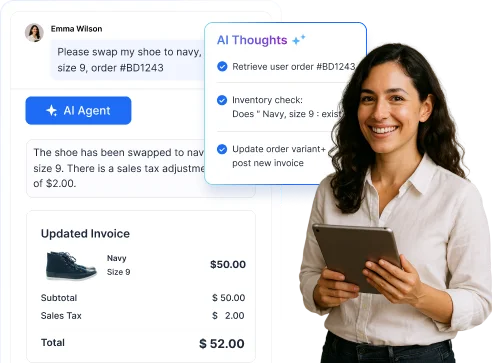


















 Email Ticketing System
Email Ticketing System Shared Inbox Software
Shared Inbox Software Multi Brand Help Desk
Multi Brand Help Desk Internal Help Desk Software
Internal Help Desk Software Trouble Ticketing Software
Trouble Ticketing Software Mobile Help Desk
Mobile Help Desk 










